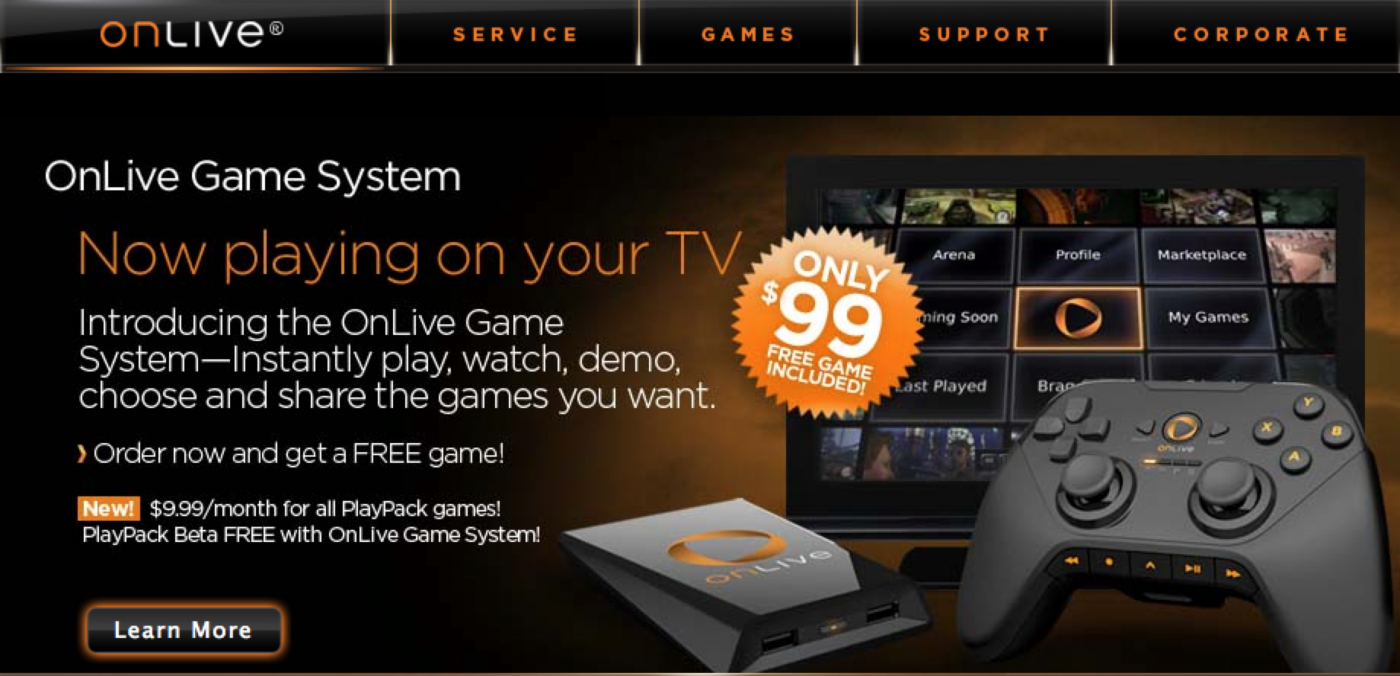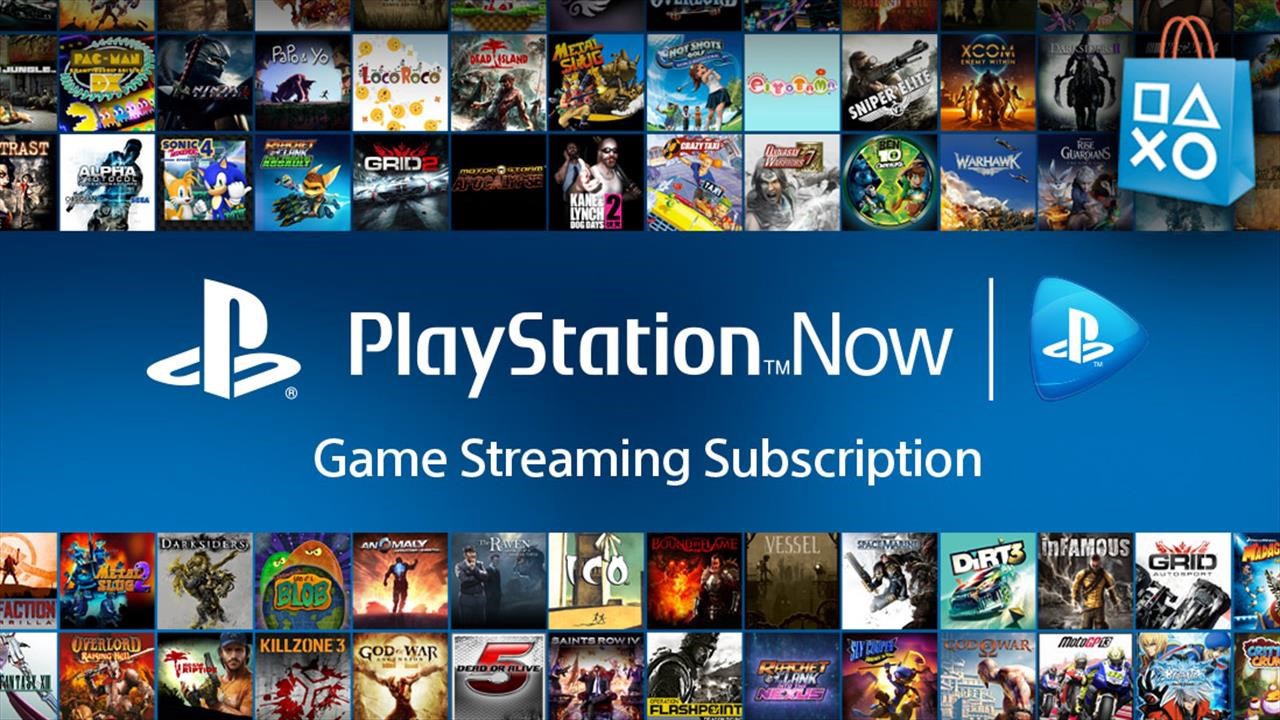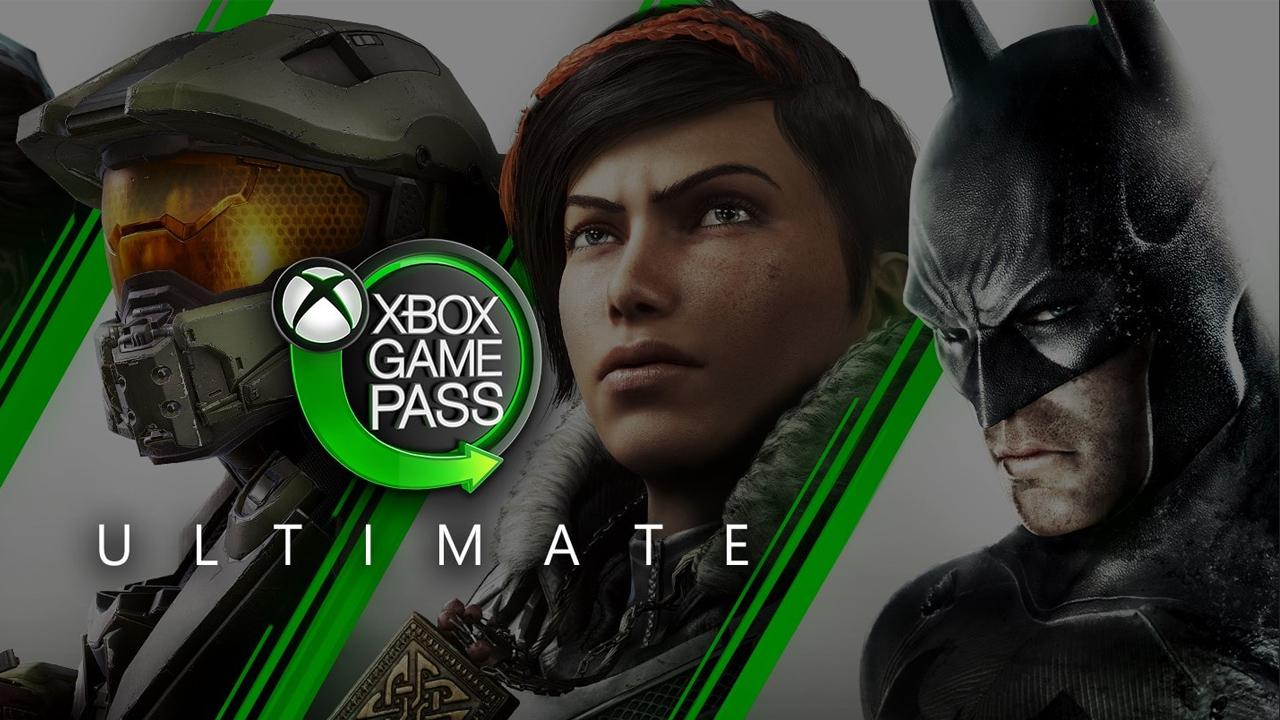Well, its here and it is something alright! Google Stadia is in the wild and has not received the fanfare Google was likely expecting. Instead it has been met with lots of ridicule.
Game streaming more than any, has been under the microscope and met with resistance from what should be its core audience. Long time gamers refuse to accept it and I understand why. But I think it is down to the marketing and not the technology.
So before we get into Google Stadia, lets look at another platform that I think actually nailed the concept, but was too far ahead of its time. Lets look back at OnLive!
OnLive was a games streaming service that released to the world in 2010 via a mini console and desktop app. The idea was simple, game run on a server and you stream them to your box (or app) and play.
There was the option to buy games outright, rent them or sign up to the Playback service. Which would give you unlimited access to a library of games for a set monthly price. Think GamePass or PS Now but much earlier.

There were many cool features too, such as your sessions being streamed to the community so anyone could watch, y’know, like streaming to Twitch or Youtube.
It could be played on many devices too, with your save data also kept in the cloud, Meaning you could easily play on one device, then login somewhere else and just carry on.
It all sounds so familiar to what PS Now, Xbox GamePass and Google Stadia are trying to do now doesn’t it?
So here is the thing. I really liked OnLive, I subscribed to PlayBack rather than buying games and had a good time with it. The main issue came from where the internet was at the time. Speeds clearly weren’t good enough and lag was a major issue in some titles.
I played slower paced games without any real issue and even some more action orientated titles worked well (when they worked). However the sit-down demo of Street Fighter IV I was given in a private room at the Eurogamer event, showed the issues up.
Using a best case scenario connection there was still delay between my actions and what happened on screen. Which meant playing a fighting game didn’t really work and showed up the issues.
OnLive was all but abandoned 2 years later, before being sold to Sony in 2015, but for me, it showed that a subscription based game streaming system could have legs. It did though, need the technology to catch up.
Sony, who bought OnLive in 2015 had just started their own streaming system in the guise of PS Now. Despite some initial teething problems, the platform seems to be growing. Both in popularity and improving performance.

Users can subscribe for around £9 per month (or cheaper with deals) and get access to a library of titles available on PS4. Incorporating both current gen games and those from the Sony back catalogue.
Realising that there could be deficiencies with a streaming only option, it is now possible to download certain titles to a PS4 and play natively too. Which gives the user choice.
Then there is the retro option. Antstream places itself in a position where it can offer a library of distinctly retro titles for a monthly sub. This library is ever growing and has some absolute classics on there.

Again this is not a perfect situation and despite working well for most people, there is pushback from certain areas. This isn’t without merit with some of the concerns, such as input lag compared to the original feel of the games.
But it feels like some want it to fail, rather than hoping it succeeds to bring many classics to a potential new audience. Which is a shame as there is so much potential here.
However that is a debate for another time. It is out there and generally works really well. From what I have seen and tried, it has legs and I welcome other options to play games.
Next up is Microsoft xCloud platform which is at the time of writing, out in Beta. This aims to give you choice of how and where to play. It will allow users to play their games natively on the console, direct stream in-home, or stream to another device via xCloud.
You can do this with any game you own digitally. Or if you have GamePass you can do the exact same with any of the titles in the GamePass library. Again with saves synced to the cloud, you’ll theoretically be able to play at home and then pick up on the toilet at work.

Of all the above so far, it appears Microsoft are marketing their platform best. Rolling out in limited beta access, before a full launch and being sure to provide a solid library of games to try on the system.
Then we have Google Stadia and… Oh boy!
I don’t even know what this is intending to be. On initial reveal I was excited. This is the all powerful Google taking the ahead of its time OnLive and making it a viable option withStadia.
I assumed that with Stadia we would get a subscription based system to get access to a library of games and the option to buy games to stream. Something that would make sense to get onboard.
Yet what we have is a platform that is too barebones to be releasing to the public. It has many problems on a technical level for one. There are reported issues with the hardware along with the rollout being a complete mess.
Then the games… Many games can be had for cheaper on other systems, that would already be owned by the sort of person to jump in early. Or are cheaper on other systems by a distance. Some even part of existing subscriptions such as PS Now and Xbox GamePass.
Some games do run well, but others, such as in the case of Samurai Showdown are even worse than Street Fighter IV felt was back in 2010 using OnLive.
This is Google. They pretty much run the internet. They should be the ones who can come into the gaming world and shake things up. But they made a huge mistake in only providing an alternative. Which could be fine, but the alternative they had is way too restrictive.
They needed to either make it friendlier to use, with more enticing ways to get players into the platform, or provide options. Options that work for the consumer.
This feels like every other experiment Google have tried, where by they have a solid idea, but fail to implement it properly. All so they can quietly close it down a few years later.
Whilst Sony, Microsoft and Antsteam have made strides in introducing streaming to a world that is hesitant but now ultimately ready. Using some careful planning and having actual strategies in place. Google’s Stadia has gone full Leroy Jenkins and have made streaming a bit of a laughing stock.
We accept there are always going to be teething issues with such things. Yet Google seem to be either silent, or blaming the developers of the games, rather than dealing with things themselves. At the very least that becomes a PR nightmare for them.
I am still a supporter of game streaming and I think / hope Sony and Microsoft’s offerings show exactly how well it can work. Next-gen could be expensive to jump in on Day One. Yet if I could get access to some of those next-gen games via there subscription based services via streaming. Well I could feel part of it and more likely to buy in down the line.
Give the consumers good options and they will spend. Convenience means a lot and people are willing to pay for convenience. It is why the introduction of music streaming services has seen a fall in piracy of music (more on that another time). It will be the same with games. Make it easier to get access to them and people will pay for the privilege.
There is still time for Google’s Stadia to turn things around and the solution is already outlined for them. They can still turn this nightmare into a dream!

